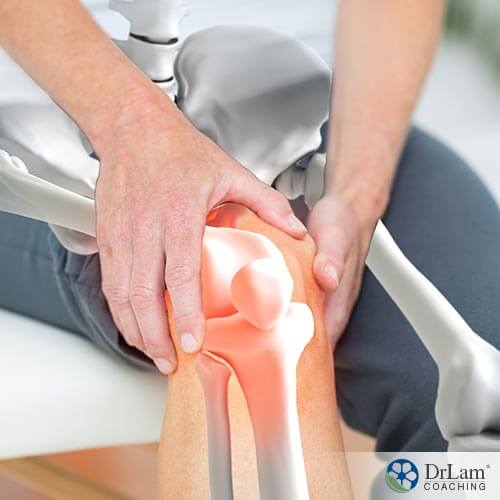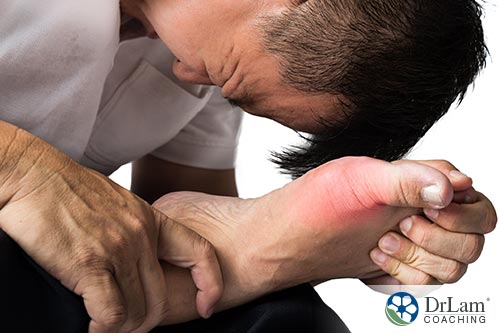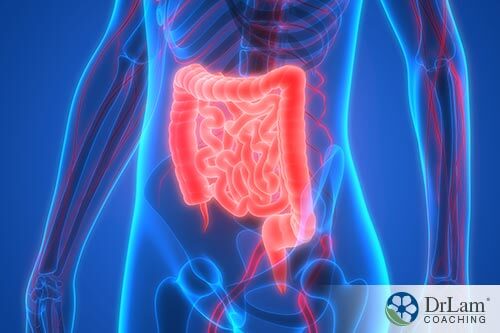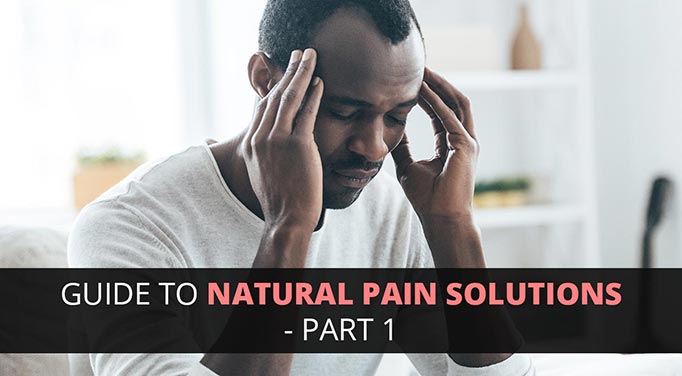 Pain. From migraines, to back pain, to arthritis, to fibromyalgia – chronic pain is one of the most pervasive issues in the medical field. It is fueling the opioid epidemic; with medical and pharmaceutical industries pushing pain medications as the only solution, even though they only work temporarily and have a very high cost later down the line. And these medications often don’t work very effectively, especially long-term. The side effects from taking this approach are reason alone to seek alternatives – natural pain solutions that don’t need other medications just to deal with their after effects and that don’t lead to tolerance and eventually addiction. Managing pain, and even resolving it, can be done very effectively with non-pharmacological solutions, and this article outlines some of the most promising natural pain solutions out there.
Pain. From migraines, to back pain, to arthritis, to fibromyalgia – chronic pain is one of the most pervasive issues in the medical field. It is fueling the opioid epidemic; with medical and pharmaceutical industries pushing pain medications as the only solution, even though they only work temporarily and have a very high cost later down the line. And these medications often don’t work very effectively, especially long-term. The side effects from taking this approach are reason alone to seek alternatives – natural pain solutions that don’t need other medications just to deal with their after effects and that don’t lead to tolerance and eventually addiction. Managing pain, and even resolving it, can be done very effectively with non-pharmacological solutions, and this article outlines some of the most promising natural pain solutions out there.
The numbers are staggering. Over 100 million Americans (one in three) suffer from pain, with one in ten Americans experiencing mild to moderate pain every single day. Globally, 1.5 billion people suffer from some type of chronic pain. These statistics mean developing healthy and natural pain solutions should be a top priority in the medical field, so as to avoid perpetuating drug epidemics that are destructive to people’s lives and society.
One thing we can be optimistic about, however, is that the root cause of chronic pain is often the same as the root cause of many chronic diseases, including autoimmune problems. This means that by addressing this one issue, while also administering a variety of natural pain solutions, we can effectively prevent, improve, or reverse both the disease and the pain.
You may have already guessed it - that underlying root cause is inflammation. More on this below.
Another incentive to finding an alternative to pharmaceutical drugs for dealing with pain is the fact that prescription drugs are a leading cause of death in the US. That is to say, correctly prescribed medication, not even incorrectly prescribed drugs. Add the latter to the equation, and the number of deaths increases exponentially.
And because most patients with chronic issues are usually prescribed several different drugs, with some drugs given to deal with the side effects of another drug, you can understand why this path causes such issues.
However, there are times when pain medications are necessary. While many natural pain solutions are effective, they are by no means a substitute for prescription pain medications, which are many times stronger. If you are already on heavy doses of pain medication, it is unlikely that a natural solution can act as a replacement. However, they may be able to help reduce your need for prescription medication over time.
Taking a holistic and functional medicine approach to conditions that cause pain is also very important. This is the power of taking a broader approach instead of just focusing on one symptom or one organ. And as your general health begins to improve, you will find that your tolerance for pain increases and it becomes easier to avoid relapses or new health issues.
The following is an outline of some of the different natural pain options available to you, but you will still need to take precautions, check with your healthcare specialist, and receive suitable professional supervision if you choose to use any of them. This is especially the case if you suffer from Adrenal Fatigue Syndrome (AFS), as your body’s ability to deal with stress from these changes is compromised.
Inflammation is known as the silent killer. But the fact is, it’s a healthy and necessary part of immunity, and you can’t live without it. Inflammation is the response of different body tissues to injury, infection, toxins, pathogens, and tissue damage. Without a properly functioning inflammation response – one of the circuits of the NeuroEndoMetabolic (NEM) Stress Response – your body is less able to defend itself against harm.
Through the inflammation response, your body is able to get rid of the initial cause of injury or infection, such as a toxin or pathogen, as well as clear out tissues and cells that were damaged by that injury or infection. That’s why a healthy inflammation response depends on a strong detoxification response – another circuit of the NEM. Once detoxification is in process, the inflammation response initiates cell and tissue repair.
Inflammation involves the gut, the microbiome, and immune cells. This is the first clue to what could cause it to get out of balance, and what you can do to reduce or prevent chronic inflammation.
 Symptoms of inflammation include heat and redness due to increased blood flow, as well as swelling due to the immune cell fluids that flow into the area. This is why you get swelling around your ankle if you twist it. Pain and irritation are also common, as well as stiffness, tiredness, chills, sweating, fever, different aches and pains, dizziness, and low appetite.
Symptoms of inflammation include heat and redness due to increased blood flow, as well as swelling due to the immune cell fluids that flow into the area. This is why you get swelling around your ankle if you twist it. Pain and irritation are also common, as well as stiffness, tiredness, chills, sweating, fever, different aches and pains, dizziness, and low appetite.
But these symptoms are usually fleeting if the inflammation is just a one-time response to an initial cause. When inflammation is chronic, however, these symptoms become persistent or recurring.
Still, because of the nature of these symptoms, inflammation that is becoming chronic can be difficult to detect early on, and only becomes visible when it has reached a harmful stage. Some of the manifestations of chronic inflammation are multiple food and drug sensitivities, inflammatory bowel disease (IBD), irritable bowel syndrome (IBS), and pain of unknown origin.
If the NEM’s inflammation response is constantly switched on, that means the immune system is also disrupted, leaving you at a higher risk for autoimmunity, frequent colds and flus, the presence of stealth viruses, recurring infections, candida, small intestinal bacterial overgrowth (SIBO), slowed healing, an inability to overcome Lyme disease, and the worsening of the other symptoms and conditions as well.
Inflammation has been described as the silent killer because it has been linked to things like cancer, heart disease, diabetes, mental illnesses, arthritis, and degenerative diseases, and also because it is not always detected using inflammation biomarkers.
However, knowing this arms you with certain measures you can take to look for inflammation and reduce its risk.
The link between inflammation, the gut, and the microbiome is the first thing to consider when trying to understand how chronic inflammation develops and how it can be treated.
 One of the main triggers of inflammation is diet. The effect of food on gut health and the integrity of the microbiome is profound. And that may be why we are seeing such a big rise in inflammatory conditions, as our diets have changed drastically from those of previous generations.
One of the main triggers of inflammation is diet. The effect of food on gut health and the integrity of the microbiome is profound. And that may be why we are seeing such a big rise in inflammatory conditions, as our diets have changed drastically from those of previous generations.
The Standard American Diet (SAD) is high in fat, low in fiber, and full of processed foods and refined sugars. Although some types of high-fat diets can be healthy, they need to be composed of healthy fats, and they still must contain enough fiber and resistant starches to ensure good digestion and the health of the gut flora. Otherwise, they are not healthy in the long run. The rest of the components of the SAD should be eliminated or reduced greatly.
Gut dysbiosis, when the gut flora is out of balance, is a primary cause of chronic inflammation, and in turn, chronic conditions. The reason is that when there is an imbalance in gut flora, the lining of your intestines is exposed to damage.
The cells that line the intestines are tightly held together in order to keep any harmful substances out of the bloodstream and only let in the nutrition extracted from the digestive process. With dysbiosis, the tightness of the lining is compromised, and leaks begin to form.
As substances like toxins, food particles, and pathogens enter the bloodstream through these leaks, the immune system immediately launches an attack on them. This is what creates inflammation. And because the leaks remain, the next time you ingest anything, the same thing happens again.
This is the cycle of chronic inflammation, and this is why inflammation begins in the gut. Plus, with the gut containing one-third of immune system tissue, in the form of gut-associated lymphoid tissues (GALT), it is no wonder that these responses are at first concentrated there.
So the next logical question is: what causes dysbiosis in the first place? There are a few triggers:
There are several ways chronic stress and gut flora affect each other. One of the main anti-stress hormones, cortisol, helps suppress the immune system and neutralize inflammation once its job is done. If you’re exposed to chronic stress, however, your adrenal glands are overworked and become dysregulated, disrupting their cortisol output. Too much or too little cortisol will affect the gut.
 Without the proper balance of cortisol and other stress hormones in the body, the immune response and inflammation can continue far past the healthy limit. And because inflammation begins in the gut, inflammation’s main victim is also the gut.
Without the proper balance of cortisol and other stress hormones in the body, the immune response and inflammation can continue far past the healthy limit. And because inflammation begins in the gut, inflammation’s main victim is also the gut.
IBS, a very painful condition, is greatly influenced by stress because of this. Many patients with IBS have seen their condition worsen during times of psychological stress, and get better during periods of relative calmness. This is no coincidence. The overproduction or underproduction of stress hormones influence the inflammation, and in turn, creates or aggravates gastrointestinal issues. Dealing with AFS is an important part of the natural pain solutions for IBS.
© Copyright 2018 Michael Lam, M.D. All Rights Reserved.
They’re definitely not prescription pain medications, with dangerous side effects and a high risk for opioid addiction. The best approach is to treat the underlying cause holistically and find lasting relief with natural pain solutions. This is your complete guide.

